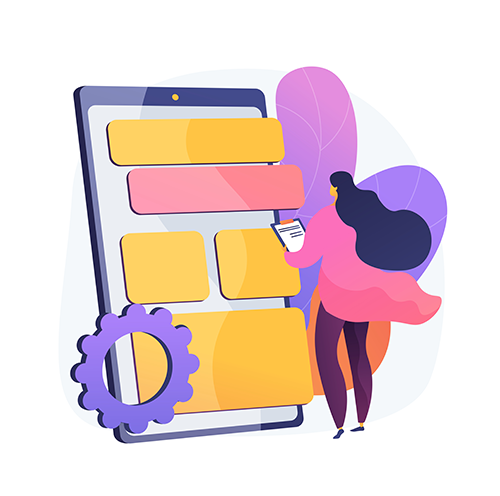Mobile app should fill a gap in user’s life – it needs to serve a clear purpose – but also has to be usable. Hence features of your mobile app matter the most. The features impact the usefulness and usability of your app.
For the first version of your app, you want to build a simple and intuitive user experience. Keep in mind that any feature that disrupts the intuitiveness of the experience is not worth having. If you include too many features initially, the user may get confused about the app’s core purpose and how it fits into their life. If you’re not sure about how a particular feature will influence the user flow, you can end up with a disorganized user experience.
This blog is your detailed guide on how to choose the best features for your mobile app!
Understand the purpose of the product
During the early planning stages of development, you should consider creating a Product Requirement Document (PRD) to simplify your ideas. Here, describe what you want the app to do, set an objective, and define what you consider success for your business.
The first step of developing a mobile app is to define your business goals. What business challenge or market opportunity does to your mobile app address? An answer to this question can vary, depending on the area of your business but you can consider the following opportunities:
- Automating business processes
- Inventory management
- Task management
- Customer self-service
- On-demand data collection, aggregation, and analysis
- Opening new revenue stream
- Improving front-end process
- Backend process improvement
- Customer education tools
- Employee education tools
There are business cases for mobile apps and countless opportunities to streamline the process or introduce a new customer value stream with a mobile app. The key is choosing features that make the most impact within the context of broader business strategy.

What do you want the app to do?
The main focus of MVP (Minimum viable product) should be on solving a single problem your intended customer is experiencing. Concentrating on only one major problem will help in establishing the product vision for the mobile app. This approach also helps you to set specific success criteria and clear objectives to determine what features that product needs to be successful. A product vision creates a definite sense of direction towards the end goal of the application. Also, it defines the solution to the problem your intended users are facing.
Setting objectives
Objectives should be measurable, specific, and attainable business targets you wish to accomplish with your mobile app.
After setting clear objectives, translate into themes. Themes are the success criteria by which you intend to achieve your goals. By writing themes, the features your app requires become apparent. As you sketch each step; you plan to take to reach your objectives.
A note on success criteria
Themes will define how to measure the success of your mobile app. Establishing success criteria is the second area of product strategy that you need to address early in the development process so, you can determine the right features and functionalities to actualize your goals.
Your success criteria are directly related to your business goals and relate to the maturity of your application. You will likely have different success criteria for a mobile app you’ve just launched compared to a mobile app that’s been in the market for a year or more. Success criteria are typically associated with cost savings, revenue, time savings, and task reduction. Still, they can be as simple as a set of users taking what you consider to be important in-app actions. Depending on the stage of your project, you can also define success with user acquisition and retention metrics.
Regardless, you need to establish a set of measurable KPIs to track throughout the evolution of your product. With specific success criteria in place, you are better equipped to pivot your strategies and make crucial product decisions when you learn more about how users interact and experience the mobile app. Otherwise, you’ll have no idea if your features contribute to meeting your business goals.
Writing themes
Based on objectives, here are example themes for the mobile product.
- Build a mobile app that is intuitive and easy to use for all customers.
– Leverage data models to learn and measure user’s experience within the app.
- Build a seamless and intuitive user experience
– Ensure sign-up, login, Onboarding, and navigation feature are not ambiguous and overwhelming to your audience.
- Become trusted management options by offering a secure and controlled environment.
– Require the app to have log-in authentication for each session.
– Leverage tokenization to ensure user sessions expire when the user is inactive for a specific period.
– Ensure proper user access level security to protect private data.
- Become a reliable source of information through accurate and consistent communications
– Provide users with a mailbox to receive confirmations or other relevant communications materials.
– Launch push notifications to inform the patient of appointment approval.
The themes above are just high-level examples, but as you can see, elaborating on objectives to create themes provides clear guidelines for accomplishing each goal. On top of that, as per the features you need to actualize, each theme becomes more apparent as we come closer to the end product.
How to Choose the Best Features for Your Mobile App
Choosing the best features for your mobile app is a process that requires you to fully define the product vision, objectives, and success criteria for the product. Once you decide on the features, ON AIR App Builder will help you in designing the features for your app without coding. Start Now!


